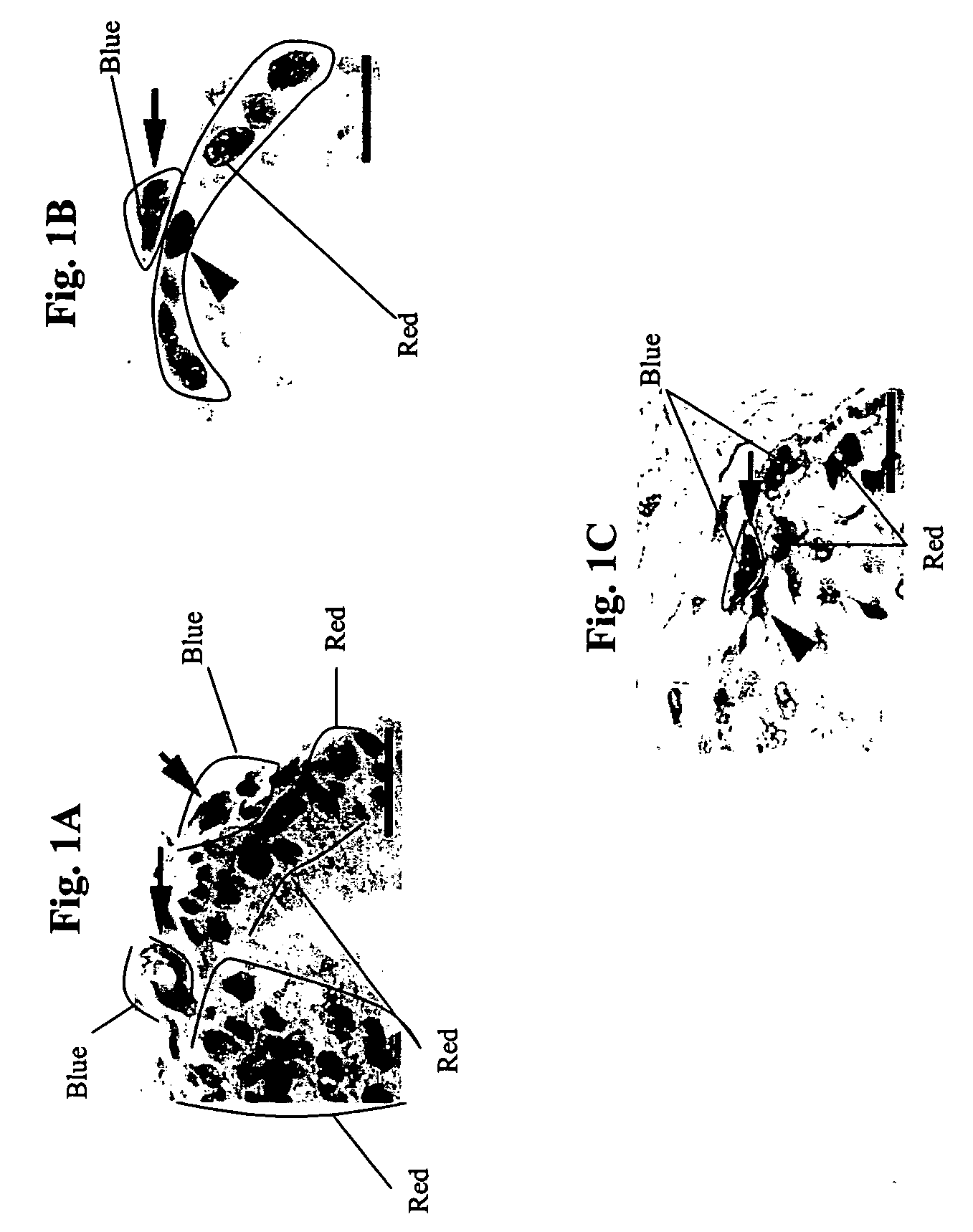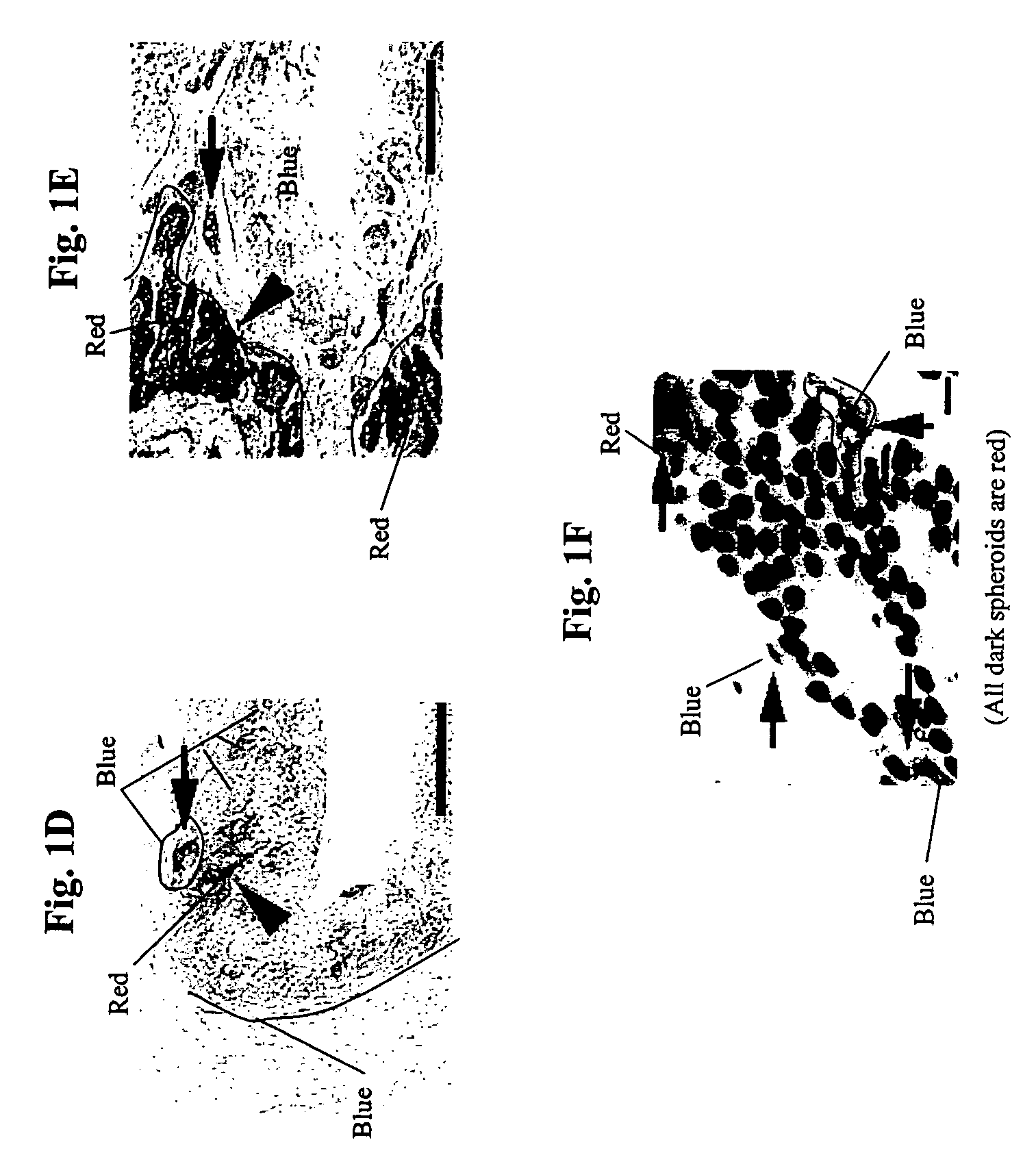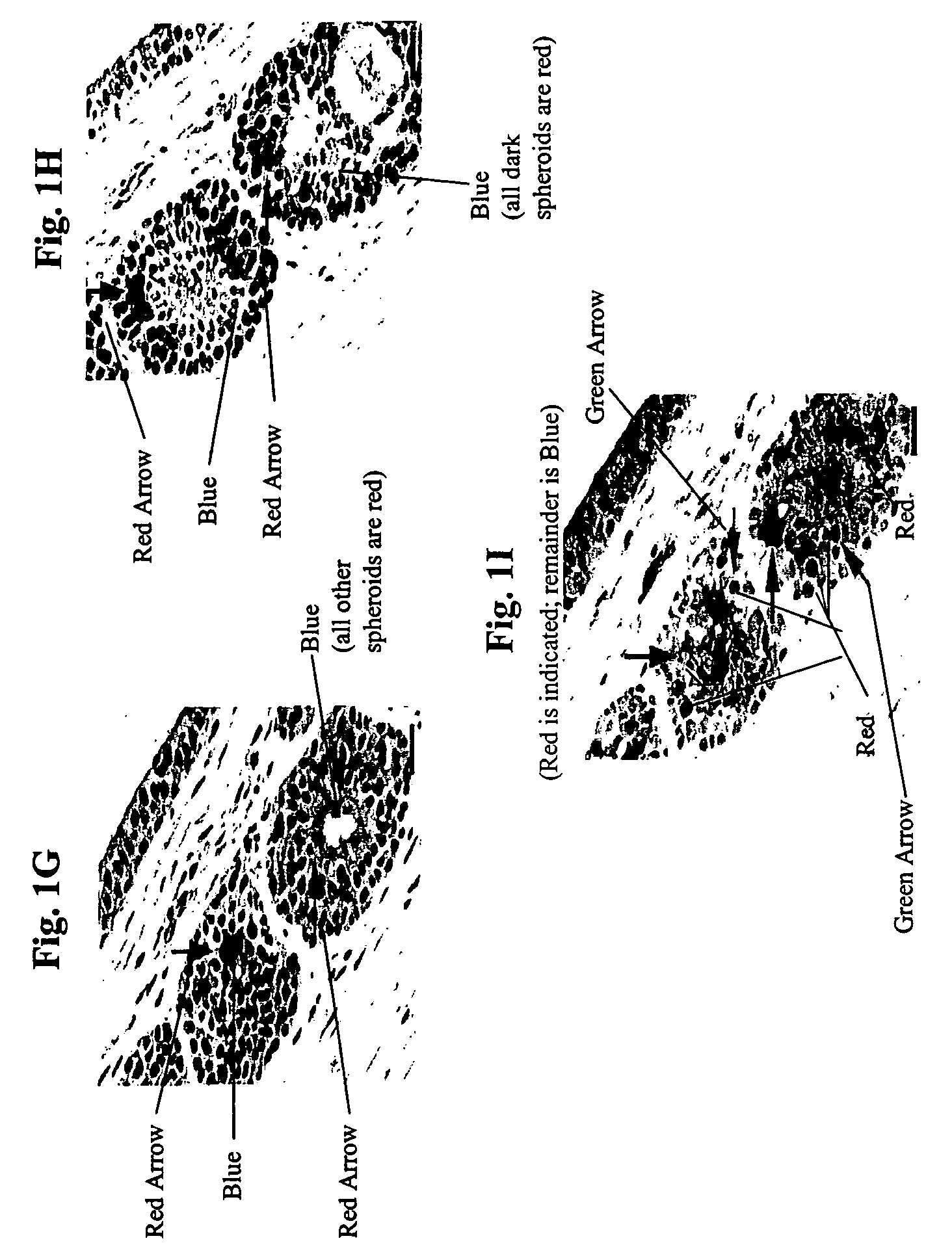Method for treating prostate conditions
a prostate cancer and treatment method technology, applied in the field of prostate cancer treatment, can solve the problems of not being able to treat androgen deprivation resistant tumors, not knowing if androgen deprivation is effective, and most metastatic prostate cancers become hormone-refractory and eventually lethal, so as to reduce the aberrant growth of prostate tissue cells and reduce the aberrant growth of cells
- Summary
- Abstract
- Description
- Claims
- Application Information
AI Technical Summary
Benefits of technology
Problems solved by technology
Method used
Image
Examples
example 1
[0025] This Example demonstrates the identification of prostate stem cells in human prostate tissue and primary xenografts.
[0026] All human prostate specimens referred to in this and other Examples herein were excess tissue harvested at the time of radical prostatectomy or needle biopsies harvested during androgen deprivation therapy, in accordance with NIH guidelines for use of human subjects, with approval by the Institutional Review Board at University of North Carolina.
[0027] All experiments using laboratory animals in this and other Examples herein were performed in accordance with Institutional Animal Care and Use Committee and NIH guidelines.
[0028] Cells in human prostate tissue can be analyzed using standard in vitro assays and by using animal models of prostate cancer. We have recently developed one such model using male athymic nude mice as hosts for human prostate tissue xenografts (Huss et al., Prostate (2004); 60:77-90). Such xenografts can be established from both f...
example 2
[0035] This Example demonstrates the response of BCRP+ cells to androgen deprivation. In this regard, and as summarized in Table 1, the proportion of glands that contained BCRP+ / AR− / p63− / Syn− cells were comparable in xenografts harvested from hosts after 1 month of establishment in an androgenic environment (24.4%), as well as xenografts harvested from hosts after 1 month of maintenance in an androgenic environment, castration, and maintenance for an additional 1 month postcastration in an androgen-deprived environment (29.5%). BCRP+ / AR− / p63− / Syn− cells in human prostate histologic specimens were observed as isolated cells, with only rare glands (0.2%) containing multicellular foci of BCRP+ / AR− / p63− / Syn− cells. In contrast, a large proportion of the glands (20.4%) in xenografts after 1 month of establishment in intact hosts contained foci of BCRP+ cells. Furthermore, castration of the host and maintenance of the xenografts under androgen deprived conditions increased the proportion ...
example 3
[0037] This Example demonstrates that, in a prostate cancer patient undergoing androgen deprivation therapy, prostate stem cells survive and may expand in response to androgen deprivation.
[0038] Because the prostate stem cell compartment in human prostate xenografts can survive androgen deprivation, and maintain proliferative capability, as demonstrated by a proliferative response to administration of exogenous androgen (Huss et al., Prostate (2004); 60:77-90), we also investigated whether prostate stem cells survive hormonal therapy in advanced prostate cancer patients. In a single patient for whom serial biopsy specimens after the initiation of androgen deprivation therapy were available, there was evidence of survival and possible expansion of the prostate stem cell compartment after 1 month of hormonal therapy (FIG. 1K). In contrast, BCRP+ / AR− cells were observed as rare, isolated cells in a biopsy specimen harvested from this patient at the initiation of hormonal therapy (FIG....
PUM
| Property | Measurement | Unit |
|---|---|---|
| androgen deprivation resistance | aaaaa | aaaaa |
| Resistance | aaaaa | aaaaa |
| resistance | aaaaa | aaaaa |
Abstract
Description
Claims
Application Information
 Login to View More
Login to View More - R&D
- Intellectual Property
- Life Sciences
- Materials
- Tech Scout
- Unparalleled Data Quality
- Higher Quality Content
- 60% Fewer Hallucinations
Browse by: Latest US Patents, China's latest patents, Technical Efficacy Thesaurus, Application Domain, Technology Topic, Popular Technical Reports.
© 2025 PatSnap. All rights reserved.Legal|Privacy policy|Modern Slavery Act Transparency Statement|Sitemap|About US| Contact US: help@patsnap.com



